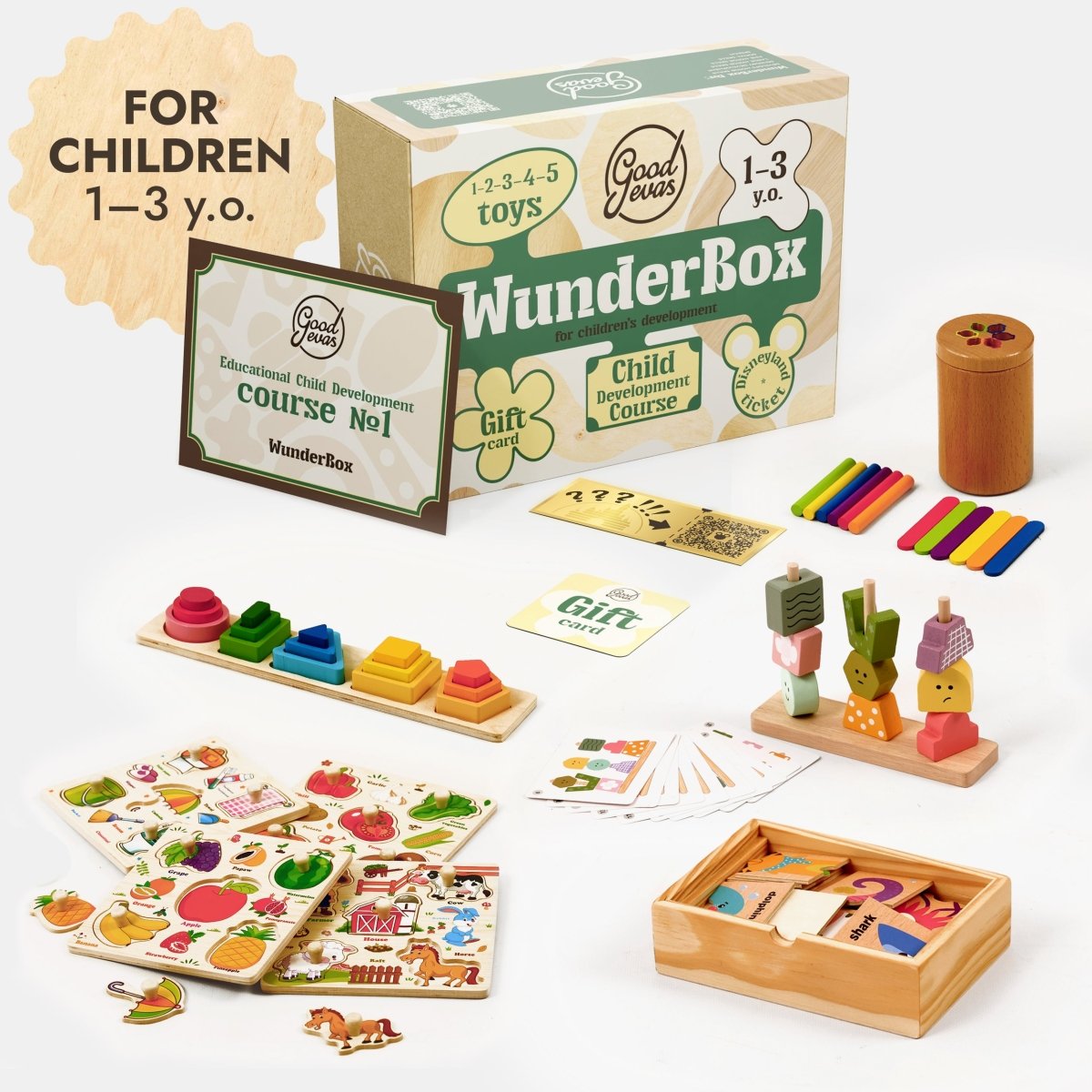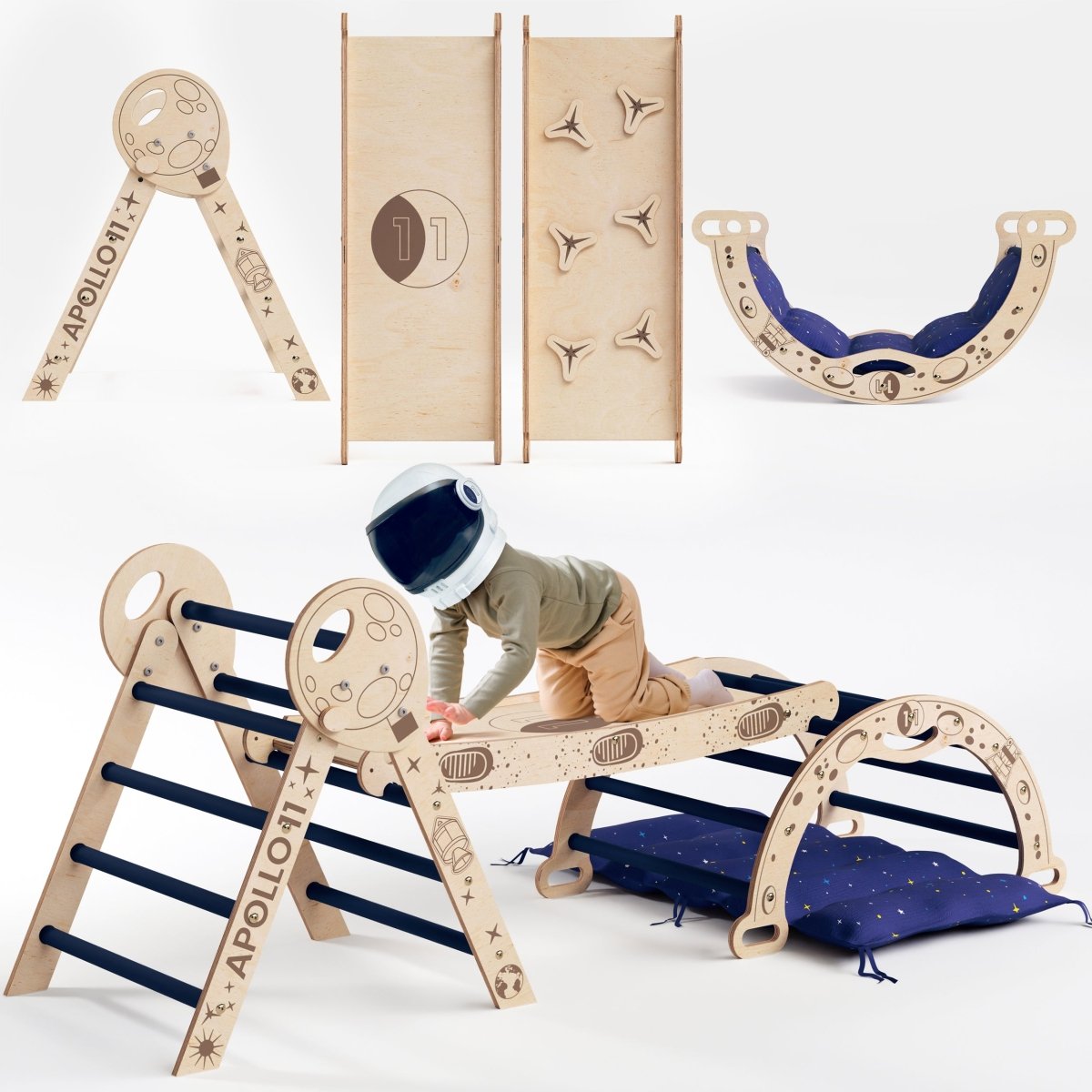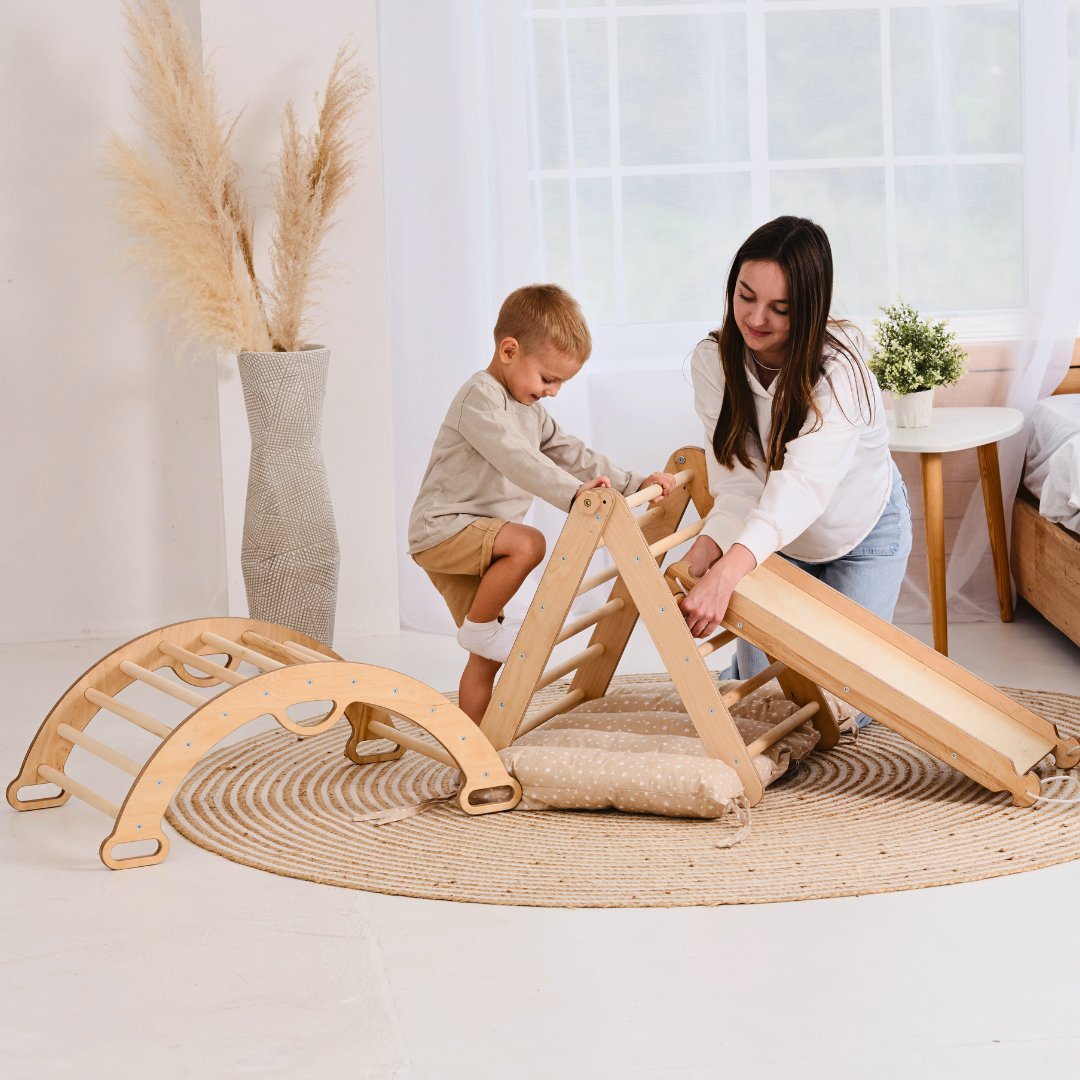Climbing to New Heights: How Montessori Swedish Walls Enhance Physical Strength
Introducing the Montessori approach
In a world increasingly focused on fostering holistic growth and nurturing the overall well-being of children, the Montessori approach stands as a beacon. This method of education, established by Dr. Maria Montessori, promotes learning through active exploration, recognizing the profound connection between the mind and body. It encourages children to explore their environment and offers them an array of activities to stimulate their cognitive and physical development. One such tool is the Swedish wall - a versatile and effective apparatus for building strength, agility, and confidence in children.
This article delves into the fundamental principles of the Montessori approach to physical development, placing special emphasis on the versatile and beneficial nature of the Swedish wall. We explore its origin, structure, and the variety of ways it contributes to a child's physical well-being. Beyond just building strength and coordination, the Swedish wall also enhances cognitive skills, fostering creativity, and problem-solving in an engaging, self-paced manner.

Source: Mybrightwheel.com
As a parent, you may wonder how to integrate this tool into your home environment effectively. We offer practical tips to ease the integration process and ensure safety while maintaining an element of fun and exploration. Finally, we touch upon how to choose the best Swedish wall for your child, taking into account versatility and the availability of additional features that extend the benefits of this incredible tool.
Whether you are a parent striving to enrich your child's learning environment at home, or if you are considering a gift that encourages hands-on learning, this article provides essential insights. Join us as we delve into the significant role Swedish walls can play in a child's physical development and strength training. Explore the advantages of this extraordinary piece of equipment that seamlessly blends play with physical development, and see for yourself the potential transformative impact it can have on your child's learning experience!
Exploring Physical Development through the Montessori Lens
The Montessori approach to physical development is both innovative and multifaceted, reflecting Dr. Maria Montessori's belief that children learn best through active, hands-on exploration. This belief isn't merely about learning maths or language; it also applies to the development of physical skills and body awareness. The key idea is that children have an innate need to move and interact with their environment, and this movement is an essential part of their cognitive and emotional development.

Source: Istockphoto.com
In a Montessori setting, physical activities are not separate from learning; they are an integral part of it. Children are encouraged to explore their surroundings, manipulate objects, and engage in various forms of physical exercise. This active exploration aids not only in developing gross motor skills but also in refining fine motor skills, both of which are critical for a child's overall development.
This Montessori method of incorporating physical development respects each child's individuality, allows them to grow at their own pace, and fosters a sense of accomplishment and self-confidence. The physical skills learned through this method go hand in hand with cognitive and social development, thus offering a holistic approach to child growth and development. As we delve deeper into the specific benefits of tools like the Swedish wall, we appreciate how Montessori's approach to physical development creates not only strong bodies but also resilient minds.
Deciphering the Code: A Closer Look at Swedish Walls
Swedish walls are a versatile piece of equipment that find their roots in physical education but have seamlessly been incorporated into the Montessori approach. At first glance, they may appear to be simple vertical ladders attached to a wall. However, the beauty of Swedish walls lies in their simplicity and the myriad of ways they can be utilised for strength training and physical development.

Source: Goodevas.com
Originally designed by Pehr Henrik Ling, a Swedish teacher, in the 19th century, Swedish walls were intended to promote gymnastics and physical strength in his students. This aligns perfectly with the Montessori philosophy, which advocates for the integration of physical movement into the child's learning process.

Source: Wikipedia.com
The structure of Swedish walls encourages children to use their own body weight as resistance. By exploring different grips, heights, and body positions, children can challenge themselves to climb, hang, swing, and balance, thereby engaging various muscle groups. Not limited to upper body strength alone, the use of Swedish walls also promotes core stabilisation, balance, and leg strength.
What's more, these walls aren't just about physicality. They're an open invitation for children to be creative, to experiment, and to engage in problem-solving. They can serve as a mountain to conquer, a tree to climb, or simply a fun way to get from one point to another.
Each child interacts with the Swedish wall at their own pace and in their own unique way, aligning with the Montessori principle of self-directed activity. Safety is of paramount importance, and Swedish walls are designed keeping this in mind. The Montessori environment emphasises observation and supervision while allowing children the freedom to explore and test their boundaries.
Unveiling The Physical Gains from Swedish Walls
Swedish walls are an outstanding example of a Montessori tool that fosters physical growth and development in children. The numerous benefits they offer are manifold, spanning various aspects of physical health and wellbeing. As children interact with these unique structures, they are subconsciously working out their entire body, engaging and strengthening muscles that might not get regular exercise otherwise.
One of the most evident benefits of the Swedish wall is the enhancement of upper body strength. As children grip, climb, and hang from the rungs, they're working their arms, shoulders, and back muscles.
Besides upper body strength, Swedish walls also promote core and lower body strength. Climbing e on the wall requires the engagement of abdominal and leg muscles, fostering overall body strength and agility. It's a full-body workout cleverly disguised as play!

Source: Borntobeadventurous.com
Furthermore, these walls help enhance balance and coordination. The vertical nature of the wall bars encourages children to maintain stability, which in turn improves their balance skills. The careful positioning and repositioning of hands and feet required for climbing the wall bars help develop both gross and fine motor skills and enhance hand-eye coordination.
Flexibility is another noteworthy benefit of using Swedish walls. By reaching for higher bars or experimenting with various movements, children can naturally increase their range of motion. This flexibility is crucial for preventing injuries and promoting overall physical health.
Finally, Swedish walls can play a significant role in improving posture. Regularly interacting with these wall bars can strengthen back muscles, promoting a naturally upright posture and potentially preventing future spinal problems.
Creating a Home-Based Montessori Haven with Swedish Walls
Integrating a Swedish wall into your home is a fantastic way to support your child's physical and cognitive development, aligning perfectly with the Montessori philosophy of learning through movement. However, it might seem like a daunting task to introduce such a massive purchase into your household. Here are some practical tips to ease the integration of a Swedish wall into your home:
Firstly, it's important to identify the right location for the Swedish wall. Ideally, it should be installed in a spacious area where your child can safely move and play. The area should be free of obstructions and, preferably, padded with a mat for added safety.

Source: Magicalnest.com
Secondly, introduce your child to the Swedish wall gradually and make sure they feel comfortable and safe while using it. Encourage them to explore it at their own pace. Be there to supervise but refrain from pushing them to achieve specific goals. Remember, the Montessori approach is all about self-directed activity and personal exploration.
Additionally, Iit is important to remember that a Swedish wall isn't just a climbing frame but an open-ended learning tool. Encourage imaginative play and use the wall as a prop for stories or make-believe games. This will increase its appeal and ensure it becomes a loved part of your home.
Lastly, when it comes to choosing a Swedish wall, opt for models that are versatile and come with many other components like a slide board and swings. Swedish walls work best when they are part of an engaging, child-friendly environment. These additional features offer more opportunities for physical development and imaginative play, expanding the potential uses of the wall and keeping your child engaged for longer.

Source: Goodevas.com
Integrating a Swedish wall into your home can bring the benefits of physical development, confidence-building, and creative play directly into your child's everyday life, making it a valuable addition to your Montessori-inspired home environment.
Final Thoughts
In this era, where screens often dominate a child's world, the Swedish wall provides a refreshing alternative, inviting children to engage in active, hands-on exploration. Its versatile nature and capacity to cater to various developmental milestones make it a valuable addition to your home or learning environment.
While choosing a Swedish wall, ensure that it aligns with your child's interests and abilities, while offering room for growth and versatility. Consider models that offer additional features to maximise engagement and versatility. Remember, your investment is not just in a physical apparatus, but in an effective tool that aids in your child's multifaceted development.
The world of child development is complex and ever-evolving, and as guardians of young minds, it's crucial to stay updated and make informed choices. In that quest, the Montessori Swedish wall stands as an exceptional choice, offering more than just physical benefits. It invites curiosity, tests limits, fosters problem-solving, and ultimately, plays a significant role in moulding resilient, independent, and confident children.
Therefore, as you embark on this journey to provide the best for your child's learning and development, consider the profound impact that a Montessori Swedish wall can make. It could indeed be a transformative addition to your child's learning journey, creating an environment of fun, creativity, and active learning right within your home.
References:
- Lillard, Angeline Stoll (2017) "Montessori: The Science Behind the Genius (3rd Edition)". Oxford University Press.
- Seldin, Tim and Epstein, Paul (2003) "The Montessori Way". The Montessori Foundation.
- Stephenson, Margaret (1991) "The First Plane of Development: Birth to Age 6". Montessori-Pierson Publishing.
- Montessori, Maria (1912) “The Montessori Method”. Frederick A. Stokes Company









Leave a comment